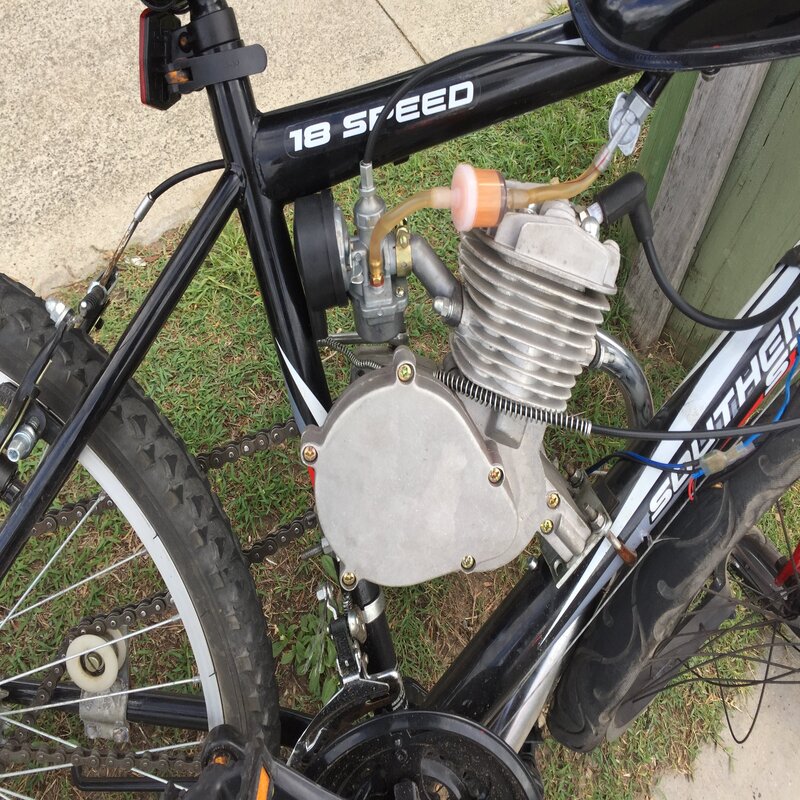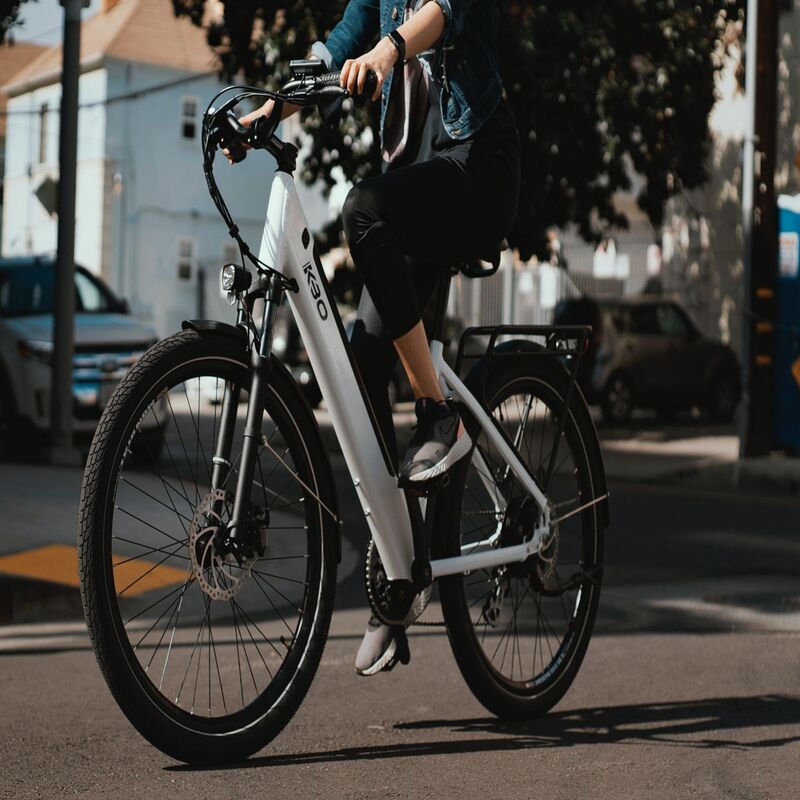Motorized bicycles have been gaining popularity, especially as an eco-friendly mode of transportation. However, many interested riders wonder about the legal aspects. Specifically, can you ride a motorized bicycle without a license? Understanding the rules and regulations surrounding this issue is not only important for abiding by the law, but also for ensuring your safety and the safety of others.
Understanding Motorized Bicycles
What Exactly is a Motorized Bicycle?
A motorized bicycle typically combines a standard bicycle with a small engine. This engine can either be gasoline-powered or electric. The bicycle’s original mechanisms, such as pedaling, are supplemented by the motor to offer an additional boost. This feature allows riders to travel longer distances without exerting as much physical effort. Different regions have distinct definitions and classifications for motorized bicycles. Therefore, it is essential to consult your local regulations.
Types of Motorized Bicycles
Motorized bicycles fall under several categories based on their power and speed. One common type is the low-speed electric bicycle. These typically have a motor with less than 750 watts and travel no faster than 20 mph. Another type is the higher-speed electric bicycle, often referred to as e-bikes. These can have more powerful motors and can reach speeds above 20 mph. Gas-powered bicycles represent another category, using internal combustion engines to give the rider extra power.

Legal Requirements
Federal vs. State Regulations
Federal laws provide guidelines for motorized bicycles, but state laws vary widely. The federal classification states that an electric bicycle with a 750-watt motor and a top speed of 20 mph is considered a bicycle rather than a motor vehicle. However, states can impose stricter regulations. Therefore, always check your state’s specific requirements before riding.
Helmet and Safety Gear
No matter your state’s laws regarding licenses, wearing a helmet is often mandatory. Proper safety gear reduces the risk of serious injury. Reflective clothing, protective gloves, and eye protection can also make a significant difference. Some states require additional equipment such as lights, mirrors, or specific brake systems. Safety should never be compromised, and following these regulations not only keeps you legally compliant but also protects you.
Do You Need a License?
States Requiring No License
Several states do not require a license to ride a motorized bicycle. In these states, motorized bicycles fall under the same category as standard bicycles. Riders can use bike lanes and other infrastructure intended for non-motorized bicycles. However, this freedom does not eliminate other regulatory requirements. Riders should still adhere to traffic laws, wear helmets, and be mindful of local restrictions.
States Requiring a License
Conversely, some states require a special license or permit to operate a motorized bicycle. This requirement is more prevalent for higher-speed or gas-powered bicycles. These states often classify motorized bicycles closer to mopeds or scooters. Riders might need to pass a written or practical test to obtain the necessary license. This process ensures that riders understand the mechanics and safety rules specific to motorized bicycles.

Pros of Riding a Motorized Bicycle
Environmental Benefits
One major advantage of riding a motorized bicycle is its smaller carbon footprint. Unlike gasoline-powered vehicles, electric bicycles produce no direct emissions. Even gas-powered bicycles have lower emission rates compared to full-sized motor vehicles. Choosing a motorized bicycle contributes positively to reducing air pollution. In an age where climate change is a pressing issue, this choice can make a meaningful difference.
Cost-Effectiveness
Riding a motorized bicycle is not only environmentally friendly but also cost-effective. Electric bicycles require less maintenance compared to a car. The cost of electricity or gasoline for a motorized bicycle is significantly lower than the cost of maintaining and fueling a traditional vehicle. Additionally, in many places, motorized bicycles are exempt from parking fees. These savings can accumulate quickly, making motorized bicycles an economical choice.
Health Benefits
While motorized bicycles offer motorized assistance, they still require some level of physical activity. Pedaling part of the time can provide a good cardiovascular workout. This makes it easier for individuals who may not be physically fit to start exercising. Moreover, regular use can lead to significant health benefits over time. Improved cardiovascular health and enhanced mental well-being are just some of the benefits of regular physical activity.
Cons of Riding a Motorized Bicycle
Legal Complications
The varying legal landscape can make riding a motorized bicycle complicated. Drivers need to be aware of different state and local regulations. Failing to comply can result in fines or other legal consequences. This complexity can be particularly burdensome for individuals who travel across state lines frequently. Staying up-to-date with current laws and regulations is essential for any motorized bicycle owner.
Safety Concerns
Motorized bicycles can pose safety risks, particularly for inexperienced riders. Accelerating too quickly or unfamiliarity with traffic laws can result in accidents. Even experienced riders must cautiously navigate through traffic and unpredictable road conditions. Protective gear becomes even more crucial in minimizing injury risks. Therefore, riders should always prioritize safety training and regularly maintain their bicycles.
Limited Speed and Range
Despite their advantages, motorized bicycles have limited speed and range compared to other vehicles. Lower-speed models max out at 20 mph, which might be insufficient for longer commutes. Additionally, electric models require charging, which can be inconvenient if you forget. Riders must carefully plan their trips to ensure they do not run out of power. This limited range and speed can restrict the use of motorized bicycles for certain activities.

Safety Tips for Riding a Motorized Bicycle
Regular Maintenance
Regular maintenance is crucial for ensuring the long-term safety and efficiency of your motorized bicycle. Essential tasks include checking tire pressure, testing brakes, and ensuring the motor functions correctly. For electric bicycles, routinely checking the battery and electrical connections is necessary. A well-maintained bicycle not only performs better but also poses fewer safety risks.
Riding Techniques
Adopting safe riding techniques can significantly enhance your experience on a motorized bicycle. Always adhere to traffic laws and guidelines. Maintain a safe distance from other vehicles. Signal your intentions well in advance. These habits can reduce the risk of accidents. Staying vigilant and aware of your surroundings is key. Defensive riding strategies can also be beneficial, especially in busy traffic conditions.
Additional Safety Equipment
In addition to basic safety gear like helmets, consider other equipment to enhance safety. Mirrors, bells, and lights can make you more visible to other road users. Reflective clothing or stickers further increase visibility, particularly in low-light conditions. High-quality locks can also prevent theft, providing peace of mind when you park your bicycle. Each piece of equipment adds an extra layer of protection, making your ride safer.
Environmental Impact
Reduced Emissions
Motorized bicycles considerably reduce emissions compared to traditional cars and motorcycles. Electric models produce zero emissions, making them an environmentally friendly choice. Gas-powered models also have a significantly smaller carbon footprint. Choosing a motorized bicycle can reduce your overall emissions. This contributes positively to tackling climate change and improving air quality in urban areas.
Energy Efficiency
Motorized bicycles are more energy-efficient than most other vehicles. They require less energy to operate. Electric models typically have higher energy conversion rates compared to cars. This efficiency translates to reduced energy consumption. Over time, the energy savings become significant, contributing to sustainable living. Opting for motorized bicycles can be part of a broader strategy for energy conservation.
Material Sustainability
Many modern motorized bicycles are designed with sustainable materials. Manufacturers increasingly use recycled and eco-friendly components. This approach further minimizes environmental impact. The production processes are often less resource-intensive than those for traditional vehicles. Choosing a motorized bicycle supports sustainable practices and promotes innovation in eco-friendly technologies. Therefore, making an informed choice can contribute to broader environmental goals.

Economic Impact
Job Creation
The rising popularity of motorized bicycles creates new opportunities for job creation. The industry needs skilled individuals for manufacturing, maintenance, and sales. Additionally, the growth of the electric bicycle market stimulates research and development efforts. This innovation drives further economic activity. As more people and businesses adopt motorized bicycles, the economic benefits extend beyond individual savings.
Infrastructure Development
The growing use of motorized bicycles often necessitates the development of specialized infrastructure. Cities and towns may invest in dedicated bike lanes, parking stations, and charging points. This infrastructural development generates local jobs and boosts the economy. Ultimately, this can lead to more sustainable urban planning. These efforts contribute to creating bike-friendly communities, benefiting everyone.
Reduced Healthcare Costs
Regular use of motorized bicycles can result in improved public health, potentially reducing healthcare costs. Increased physical activity lowers the risk of chronic diseases. This can translate to fewer medical visits and lower healthcare expenses. Healthier populations contribute more to the economy, both through reduced healthcare costs and increased productivity. Therefore, the public health benefits can have wide-reaching economic implications.
The Future of Motorized Bicycles
Technological Advancements
The future looks promising for motorized bicycles, primarily due to technological advancements. Battery technology is continually improving, offering longer ranges and shorter charging times. Innovations in materials science are making bicycles lighter yet more durable. Smart technologies, such as GPS and IoT, are being integrated into modern designs. These advancements will undoubtedly enhance the user experience.
Policy Developments
Governments worldwide are recognizing the benefits of motorized bicycles and are adjusting policies accordingly. Subsidies and tax incentives for electric bicycles are becoming more common. These measures aim to encourage adoption and make them more accessible. Policy changes often include improved infrastructure and safety regulations. All these factors contribute to making motorized bicycles a more mainstream form of transportation.
Community Adoption
The community adoption of motorized bicycles is rising steadily, which can lead to cultural shifts. As more people embrace this mode of transportation, social perceptions are likely to change. The normalization of motorized bicycles can lead to even wider adoption. Community efforts, such as bike-sharing programs, further promote usage. Ultimately, this cultural shift can contribute to broader societal benefits.
Conclusion
Summarizing the Legal Landscape
Navigating the legal landscape of riding a motorized bicycle can be complex but manageable. Different states have varying requirements regarding licenses and safety gear. Therefore, it is crucial to stay informed and compliant with local laws. While some states impose licensing requirements, others offer more lenient regulations. Understanding these legal complexities is the first step to enjoying your motorized bicycle responsibly.
Emphasizing Safety and Benefits
The advantages of riding a motorized bicycle are numerous, from environmental benefits to cost-effectiveness and health improvements. However, these benefits can only be enjoyed safely by adhering to best practices and legal requirements. Regular maintenance and the use of protective gear are essential. Following safe riding techniques further minimizes risks. Balancing these aspects ensures a rewarding experience.
Looking Forward
The future of motorized bicycles appears promising, thanks to ongoing technological and policy advancements. As more people adopt motorized bicycles, the cumulative benefits will become even more apparent. Ultimately, motorized bicycles offer a practical, eco-friendly, and enjoyable mode of transportation. They represent a valuable part of the future of urban mobility. Embracing this trend can lead to significant personal and societal benefits.


